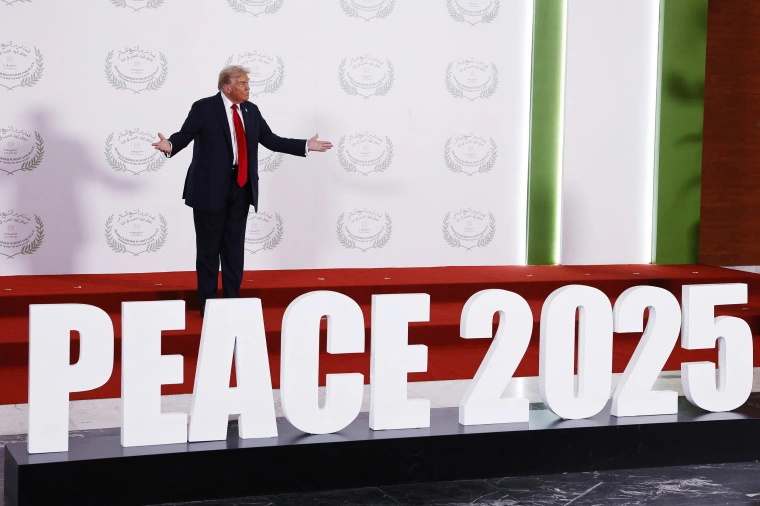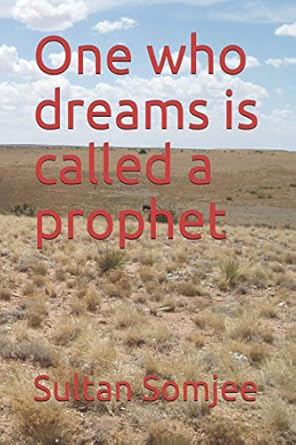“Peace is the coded continuation of war by other means.”
—Michel Foucault, Society Must Be Defended: Lectures at the Collège de France, 1975–1976, trans. David Macey (New York: Picador, 2003), p. 15.
It was wall-to-wall Trump.
Donald Trump’s Peace 2025 summit in Sharm el-Sheikh resembled a television production more than a peace negotiation. From the red carpet arrivals to the giant banners reading Peace 2025, cameras saturated every handshake, every formulaic pause. It was not governance in action but spectacle in reproduction, an event engineered for frames, clips, and applause.
The Sharm El-Sheikh Peace summit, as Marwan Bishara, Al Jazeera’s Senior Political Analyst, wryly observed, was more akin to a ‘Middle East Wedding of Trump’. His remark, ‘Unless you really paid attention, one would not know it is about Gaza’, succinctly captured the superficiality of the event.
Not politics, not diplomacy, just the performance of power.
Here he was arriving, here again at the Knesset, here again performing magnanimity before the cameras. The day unfolded like a reel edited by a single ego. News anchors gasped at his audacity; ministers hovered like extras in his movie. For a few surreal hours, global politics resembled a reality show that mistook itself for a peace accord.
Everyone, it seemed, was a little afraid of him. They weren’t negotiating with a man bound by the rules of a postwar order, but with a force untethered from caution. Recklessness had become a strategy, chaos a form of leverage. And in the shadow of that recklessness, Palestinians began returning—not to homes, but to ruins: 90 per cent rubble, 100 per cent despair. There was no United Nations mission on the ground, no international scaffolding, no elected Palestinian authority to inherit the ashes. Only a ceasefire that had been written months earlier and performed now as a revelation.
The bombing had stopped; that alone was enough to bring the world a measure of relief. Hostages reappeared in the arms of their families, and Palestinian prisoners were released from their cells. Cameras caught tears and embraces, and for a moment, the image held. But it was a mirage of closure, a frame mistaken for a foundation. We are kidding ourselves, as if someone murmured on air. What we had was not peace, but the beginning of a framework—a pause dressed up as prophecy.
Trump stood at the centre of it all, the gravitational core of a politics that has replaced deliberation with spectacle. He did not so much broker peace as occupy it, staging reconciliation as a personal brand. It was not the end of the war; it was the monetisation of its intermission. The applause was deafening, but behind the sound lay the quiet arithmetic of reconstruction—unfunded, unplanned, unclaimed.
He was not playing within the rules-based order; he was playing the room.
“I mean, Bibi would call me so many times: ‘Can you get me this weapon, that weapon, that weapon?’ Some of them I never heard of, Bibi. And I made them,” Trump said. “But you used them well. It also takes people that know how to use them, and you obviously use them very well, but so many that Israel became strong and powerful, which ultimately led to peace. That’s what led to peace.”
It’s hard to imagine a more unvarnished confession of complicity, except that Trump delivered it as comedy. There he was, bragging about the “best weapons in the world,” lamenting how “dangerous” they were, and then boasting that he shipped them off to be used in Gaza. The irony wrote itself: a man claiming to “hate war” while congratulating another for how “well” he waged it. Even the punchline landed with moral precision, “you obviously use them very well”—as if civilian devastation were a metric of efficiency.
In that moment, the performance became prophecy: the self-declared peacemaker praising the artistry of destruction. It was diplomacy reimagined as stand-up, geopolitics as open mic. “We gave them all the weapons they needed,” he grinned—oblivious to how cleanly he’d distilled the truth of American foreign policy into a single laugh line. Peace, apparently, is just war with better branding.
Then a seam in the spectacle split during his visit to the Knesset. Two MPs rose like small, stubborn truths and lifted paper into the air: Recognise Palestine. No shouts. No curses. Only the black ink of a sentence held aloft, and the chamber’s reflexive counter-ritual—Please expel this Knesset member. Please expel him immediately. The microphones captured a different kind of eloquence: the hush in which dissent becomes visible.
Speaking to Andrew Marr of LBC, a British digital radio station, after his ejection from the Knesset, Israeli MP Ofer Cassif explained his decision to hold up a placard during Donald Trump’s address. “We did not disrupt,” he said. “We held signs. We held a mirror.” In that mirror, Cassif added, was the absurdity of hailing Trump as a saviour, a man whose support for Netanyahu’s government, and whose permissions and postponements, had helped deliver the carnage now being perfumed as concord.
Kasif’s indictment was spare and prosecutorial. The previous agreement, he reminded the audience, had been broken with Washington’s indulgence; the slaughter prolonged, the hostages made coin in a theatre that called itself history. To name complicity in such a hall, under such lights, is to break an enchantment. He called the day’s event what it so faithfully resembled: a cult of personality, grotesque as it was polished. And still he proceeded with an austerity that refused the comfort of factions: the massacre of October 7 was criminal, intolerable; the devastation in Gaza, a continuous atrocity. To hold both truths in one hand was, he insisted, not contradiction but humanism.
What we witnessed was not peace but its simulation—a ceasefire staged as closure, history reduced to highlight reels. The cameras captured a finale while history waited, unedited, for an author. They followed the choreography of redemption even as the machinery of reconstruction remained unwritten. Behind the show, crucial questions remained unanswered. Who would govern Gaza? Under what legal mandate would security forces act? How would reconstruction be funded—and by whom? There was no reactivation of UN frameworks, no revival of the Palestinian authority with recognised legitimacy. Instead, the agreement as presented was fragile, built on goodwill and display rather than institutions. In that void, the summit became a masterclass in political theatre: dazzling to watch, but structurally brittle. The spectacle, so total, left no room for the slow, invisible labour that real peace requires. In the age of streaming, confusion has become an art form: we consume consequence and call it resolution.
In the times when a genocide was live-streamed, every atrocity arrived with lower thirds and ad breaks, and the world rehearsed its grief in real time. We scrolled through ruin, mistaking exposure for justice, coverage for covenant. With Peace 2025, the Sharm El-Sheikh Peace summit, what endures is not the broadcast but the untelevised work: law, repair, return—the patient architecture of a future that does not yet exist. Afterwards, the signal fades, and all that remains is the silence of a world learning, again, that peace is not a show one can stream.
That the Peace Summit unfolded in Sharm El-Sheikh was itself a parable in irony. Perched at the tip of the Sinai Peninsula, this glittering resort town has long been a stage for the rituals of diplomacy, with Camp David’s echo carrying across its sands. It was from Sinai that Israel once advanced into Egypt in 1956, withdrew under UN supervision, returned in 1967, and finally relinquished the territory in 1982 under the treaty that made Egypt the first Arab state to normalise relations with Israel. Sharm El-Sheikh thus stands as a monument to the complicated geometry of postwar peace agreements written in law, guaranteed by institutions, and sealed through mutual recognition.
To convene Peace 2025 there, under President el-Sisi’s reign, was to perform reconciliation in a place already saturated with its memory. The site’s history of meticulous diplomacy only sharpened the spectacle’s emptiness: where once treaties were signed in exhaustion, now cameras recorded applause; where sovereignty was defined in clauses and borders, now “peace” was an event brand, lit in gold. The irony is almost geological—the same ground that once bore the weight of negotiated withdrawal now hosts the choreography of televised triumph. In the very desert that taught the world how difficult peace must be, the new order has learned only how easily it can be staged.
The tableau in Sharm El-Sheikh unfolded like an overexposed photograph, brilliant in surface, hollow in depth. Egypt, Qatar, and Saudi Arabia performed their assigned roles with the studied decorum of states long schooled in the theatre of Western mediation, yet beneath the choreography lingered a familiar wariness. There was no shared conviction here, only the cautious rhythm of actors who have seen this play before.
While France, the UK, and Canada were there to be seen—to signal relevance in a Middle East that no longer orbits Western diplomacy. Their presence in Cairo was less about authorship than attendance, an act of geopolitical theatre rather than strategic intervention. The old Atlantic alliance, once the architect of frameworks like Dayton or the Quartet Road Map, now played the part of dignified spectators, lending international legitimacy to an event choreographed elsewhere.
But why they were willing to attend is equally revealing. Their attendance also betrayed a subtler anxiety—the fear of absence. In a region now defined by Trump’s showmanship, Gulf assertiveness, and the quiet pragmatism of Egypt, Qatar and Turkey, Western powers could not risk invisibility. The summit thus became a mirror of their diminished agency: leaders arrayed along the margins of the frame, applauding a script they did not write. Their statements echoed the familiar vocabulary—two-state solution, reconstruction, humanitarian corridors—but the grammar of influence had shifted. What they enacted, perhaps unknowingly, was the rite of Western spectatorship: bearing witness to a spectacle of peace that signified not their return to the stage, but their graceful withdrawal from it.
Where Dayton convened warring factions into a juridical frame and Belfast bound antagonists into shared institutions, Trump’s diplomacy traded process for posture, structure for show. The summit’s applause masked unease; its pageantry concealed paralysis. Here was the consummation of our era’s political aesthetic, where power no longer builds, it broadcasts; where the appearance of order supplants its substance.
Read the Peace plan—and see who signed it. There, in the fine print, lies the architecture of absence: no Palestinians, no UN, no framework of law, only signatures of convenience beneath the gilt logo of Peace 2025. This, finally, is the irony of Trump’s self-anointed “new Middle East”: a peace without partners, a stage without a script, a treaty bound not by consent but by coverage.
For half a century, Sharm el-Sheikh has been where history learned the difficulty of peace. Now, peace itself has been reduced to a backdrop. What once required negotiation now demands only lighting; what once ended wars now ends with applause. And as the cameras fade and the world scrolls on, the old truism returns with cruel clarity: peace, when it is real, is never cinematic—but when it is not, it always looks like this.
Donald Trump arrived in the Middle East hawking Peace 2025 the way a salesman pushes a rerun, draped in the rhetoric of “the Abraham Accords,” as if a recycled arms deal could pass for revelation. Two years into Gaza’s unbroken agony, the “historic dawn of a new Middle East” he promised looks less like redemption than relapse: the old order rebadged, its oppression franchised under new branding.
The Sharm el-Sheikh communiqué, stitched together by strongmen and autocrats, was a remix of every American illusion since Oslo—that prosperity could replace sovereignty, that quiet meant consent. But the silence of the oppressed is never peace; it is the pressure before the return of the scream. Trump’s pageant of normalization sold weapons as diplomacy and applause as justice. The dictators nodded, the cameras rolled, and the genocide kept its sponsors. The curtain call was predictable: Sisi gave Trump an award.



